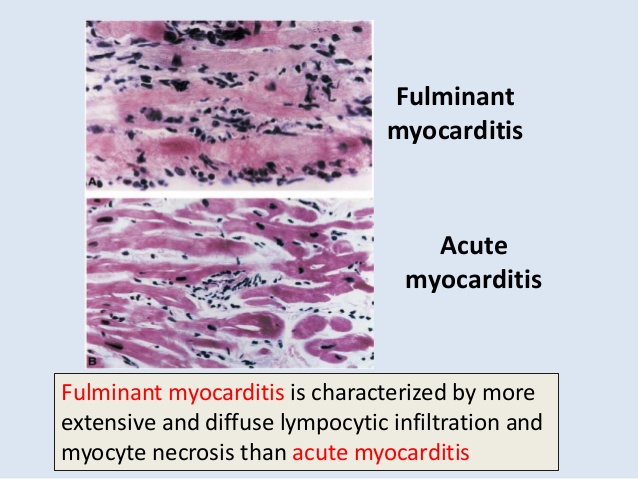New Guidelines Issued By American Heart Association On Treating Fulminant Myocarditis
Source: Thailand Medical News Jan 06, 2020 5 years, 3 months, 2 weeks, 3 days, 17 hours, 3 minutes ago
The new guidelines and resources needed to treat
fulminant myocarditis ie severe, inflammation of the
heart that develops rapidly, are outlined in a new Scientific Statement from the
American Heart Association on how best to reduce fatalities from this rare condition. The Statement is published today in the Association's premier cardiovascular journal
Circulation.

Typically,
fulminant myocarditis is often caused by a viral infection and comes on suddenly and often with significant severity, resulting in an exceptionally high risk of death caused by cardiogenic shock (the
heart's inability to pump enough blood), fatal arrhythmias (abnormal
heartbeats) and multiorgan failure. Besides viral infections, other common etiologies include bacterial and protozoal infections, toxins, drug reactions, autoimmune diseases, giant cell
myocarditis, and sarcoidosis.
With numerous advances in today's technology, there are a lot of devices that can fully support a patient's circulation and oxygenation/ventilation when necessary. The early recognition of
fulminant myocarditis, institution of circulatory support and maintenance of end-organ function (especially avoiding prolonged neurologic hypoxemia) can result in favorable outcomes for this previously almost universally fatal condition.
The new guidelines details increasing awareness and education of
fulminant myocarditis among health care providers to speed evaluation, diagnosis and treatment. Treatment options for optimal outcomes include supporting patients through the use of extracorporeal life support (
heart lung machine), percutaneous and durable ventricular assist devices (devices to help the
heart pump) and
heart transplantation.
Dr Leslie T. Cooper, M.D., FAHA, Vice Chair of the Guideline Writing Committee told
Thailand Medical News, "It is fortunate that
fulminant myocarditis is rare and that it usually presents in typically younger and healthier patients, rather than critically ill patients seen in the office or emergency department. This is where there are the greatest opportunities: early diagnosis, rapid treatment and the ability of frontline clinicians to detect the subtle signs and symptoms of this serious condition."
The Guideline and statement has been endorsed by the
Heart Failure Society of America and the Myocarditis Foundation.
Reference : Recognition and Initial Management of Fulminant Myocarditis: A Scientific Statement From the American Heart
Association, Robb D. Kociol,
title="Leslie T. Cooper">Leslie T. Cooper, James C. Fang, Javid J. Moslehi, Peter S. Pang, Marwa A. Sabe, Ravi V. Shah, Daniel B. Sims, Gaetano Thiene, Orly Vardeny
Circulation (2020). DOI: 10.1161/CIR.0000000000000745
